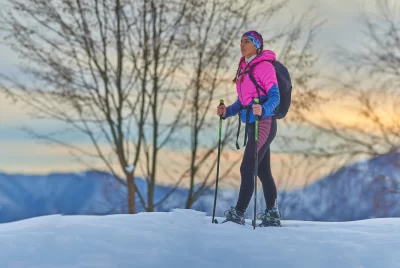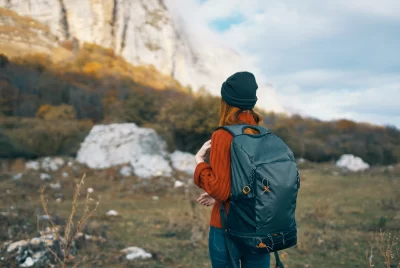Hiking Gear for Winter Adventures: Conquer the Cold in Style
As passionate hikers, we know that winter offers a unique and breathtaking experience on the trails. However, conquering the cold requires more than just enthusiasm; it demands the right gear to keep you warm, comfortable, and safe. In this article, I will guide you through essential hiking gear for winter adventures, providing helpful suggestions and reasons for my recommendations. Let’s delve into the world of winter hiking and explore how to conquer the cold in style!
Importance of Proper Hiking Gear
When embarking on winter hikes, proper gear becomes paramount. The frigid temperatures, unpredictable weather conditions, and challenging terrains call for reliable equipment that can withstand the elements. Investing in high-quality winter gear ensures your safety, enhances your comfort, and enables you to fully enjoy the beauty of winter landscapes.
Layering for Winter Hiking
Layering is a fundamental principle when it comes to dressing for winter hiking. By wearing multiple layers, you can easily regulate your body temperature and adapt to changing weather conditions. Start with a moisture-wicking base layer to keep perspiration at bay. Add an insulating mid-layer, such as a fleece or down jacket, to trap warmth. Finally, top it off with a waterproof and breathable outer shell to protect you from wind, rain, and snow.
Essential Clothing for Winter Hiking
- Insulated Jacket: Opt for a high-quality insulated jacket that provides exceptional warmth without compromising mobility. Look for features like adjustable hoods, multiple pockets, and durable materials.
- Thermal Base Layers: Choose thermal base layers made from merino wool or synthetic fabrics. These materials offer excellent insulation and moisture-wicking properties.
- Waterproof Pants: Invest in waterproof and wind-resistant pants to keep your lower body protected from the elements. Look for reinforced knees and ample pockets for added functionality.
- Gloves and Mittens: Pack a combination of gloves and mittens to cater to various temperature ranges. Consider insulated gloves with touchscreen compatibility for easy smartphone use on the trails.
- Headwear: Don’t forget a warm hat or beanie to prevent heat loss from your head. Additionally, a neck gaiter or balaclava can provide extra protection against biting winds.
Footwear for Winter Hiking
Choosing the right footwear for winter hikes is crucial to ensure traction, warmth, and comfort. Here are some recommendations:
- Insulated and Waterproof Boots: Invest in insulated and waterproof hiking boots designed for winter conditions. Look for boots with a sturdy outsole, ankle support, and insulation like Thinsulate or PrimaLoft.
- Microspikes or Crampons: Depending on the terrain, consider using microspikes or crampons to enhance traction on icy or snowy surfaces. These attachments provide extra grip, ensuring stability and preventing slips and falls.
- Wool Socks: Opt for moisture-wicking and insulating wool socks to keep your feet warm and dry during winter hikes. Avoid cotton socks as they retain moisture and can lead to cold feet.
Accessories for Winter Hiking
- Hiking Poles: Hiking poles offer stability and support, especially when navigating steep and slippery terrains. Choose adjustable poles that can be adapted to various heights and terrain conditions.
- Gaiters: Gaiters are essential for keeping snow, debris, and moisture out of your boots. They provide an extra layer of protection for your lower legs and ankles.
- Hand Warmers: Consider bringing along hand warmers to provide instant warmth during cold spells. They are compact, easy to use, and can be a real lifesaver in freezing temperatures.
Safety Gear for Winter Hiking
Winter hiking involves additional safety considerations. Ensure you have the following gear to stay safe on the trails:
- Headlamp: Days are shorter during winter, so a reliable headlamp is essential for navigating in low-light conditions. Choose a headlamp with a long battery life and multiple brightness settings.
- Navigation Tools: Carry a map, compass, or GPS device to help you navigate trails, especially in snowy or foggy conditions. Familiarize yourself with the route before setting out.
- Emergency Supplies: Pack a basic first aid kit, emergency blanket, whistle, and fire starter as a precautionary measure. These items can be invaluable in unforeseen circumstances.
Choosing the Right Backpack
Selecting the right backpack is crucial to carry all your winter hiking essentials. Look for a backpack with the following features:
- Capacity: Opt for a backpack with sufficient capacity to hold your gear, extra layers, food, and water. A 30-40 liter backpack is typically suitable for day hikes, while multi-day hikes may require larger capacities.
- Comfort and Fit: Ensure the backpack has padded shoulder straps, a supportive hip belt, and an adjustable suspension system. A well-fitting backpack reduces strain and enhances comfort during long hikes.
Hydration and Nutrition
Staying hydrated and properly nourished is vital during winter hikes. Remember the following tips:
- Water Bottles: Insulate your water bottles to prevent freezing. Carry an insulated sleeve or use an insulated bottle that keeps liquids from turning into ice.
- Hot Drinks and Thermos: Enjoy warm beverages like tea, coffee, or hot chocolate to keep you warm from the inside. Carry a thermos to keep your drink hot for an extended period.
- High-Energy Snacks: Pack lightweight, high-energy snacks such as trail mix, energy bars, and dried fruits to fuel your body during the hike. These snacks provide quick energy and are easy to consume on the go.
More Tips for Winter Hiking
- Check Weather Conditions: Stay updated on weather forecasts and trail conditions before heading out. Be prepared for sudden weather changes and adjust your plans accordingly.
- Travel with a Companion: Winter hikes are best enjoyed with a hiking partner. Having someone by your side enhances safety and makes the experience more enjoyable.
- Inform Others: Let someone know about your hiking plans, including the route and estimated return time. This ensures that someone is aware of your whereabouts in case of an emergency.
- Start Early: Start your hike early in the day to make the most of daylight hours and avoid hiking in colder temperatures or darkness.
- Learn Basic Winter Skills: Familiarize yourself with basic winter skills such as recognizing signs of hypothermia, using an ice axe or trekking poles, and self-arrest techniques.
Conclusion
Winter hiking can be a remarkable adventure if you are well-prepared with the right gear. By following the suggestions mentioned above, you can conquer the cold in style and enjoy the beauty of winter landscapes while staying safe and comfortable on the trails.
Remember, investing in high-quality winter gear is crucial to ensure your safety and enhance your overall hiking experience. Layering your clothing, choosing insulated and waterproof boots, and having the right accessories will protect you from the cold and keep you comfortable throughout your hike. Additionally, don’t forget to pack essential safety gear and choose a suitable backpack to carry all your necessities.
Maintaining hydration and proper nutrition is equally important during winter hikes. Keep your water bottles insulated and carry warm beverages in a thermos to stay hydrated and warm. Pack high-energy snacks to fuel your body and provide the necessary nutrients to keep you going.
Before embarking on a winter hike, always check the weather conditions and trail updates. Traveling with a hiking partner is highly recommended for safety reasons, and informing someone about your hiking plans ensures that there is someone aware of your whereabouts. Starting early in the day maximizes daylight hours and minimizes exposure to colder temperatures.
Lastly, take the time to learn basic winter skills such as recognizing signs of hypothermia, using hiking poles or an ice axe, and understanding self-arrest techniques. These skills can be invaluable in emergency situations and can make a significant difference in your safety on the trails.
So, gear up, plan your winter adventure, and embrace the unique experience of hiking in the cold. With the right gear and preparations, you’ll be able to conquer the cold in style and create unforgettable memories amidst the winter wonderland.
FAQ
FAQ 1: Can I use regular hiking gear for winter hiking?
While some regular hiking gear may work for mild winter conditions, it’s recommended to invest in specialized winter gear. Winter-specific gear provides better insulation, waterproofing, and protection against the cold.
FAQ 2: What type of insulation is best for winter clothing?
Natural fibers like merino wool and synthetic materials like polyester or PrimaLoft are excellent choices for winter clothing insulation. They offer warmth, and moisture-wicking properties, and retain heat even when wet.
FAQ 3: Are waterproof boots necessary for winter hiking?
Yes, waterproof boots are highly recommended for winter hiking. They keep your feet dry and protected from snow, slush, and icy conditions, preventing discomfort and potential frostbite.
FAQ 4: How do I stay safe during winter hikes?
To stay safe during winter hikes, check weather conditions, hike with a partner, inform someone about your plans, carry essential safety gear, and learn basic winter skills. Being prepared and taking necessary precautions are key.
FAQ 5: What should I pack in my backpack for winter hiking?
In your backpack, pack essentials like extra layers of clothing, gloves, hats, snacks, water bottles, navigation tools, emergency supplies, and a first aid kit. Adjust the contents based on the duration and difficulty of your hike.




